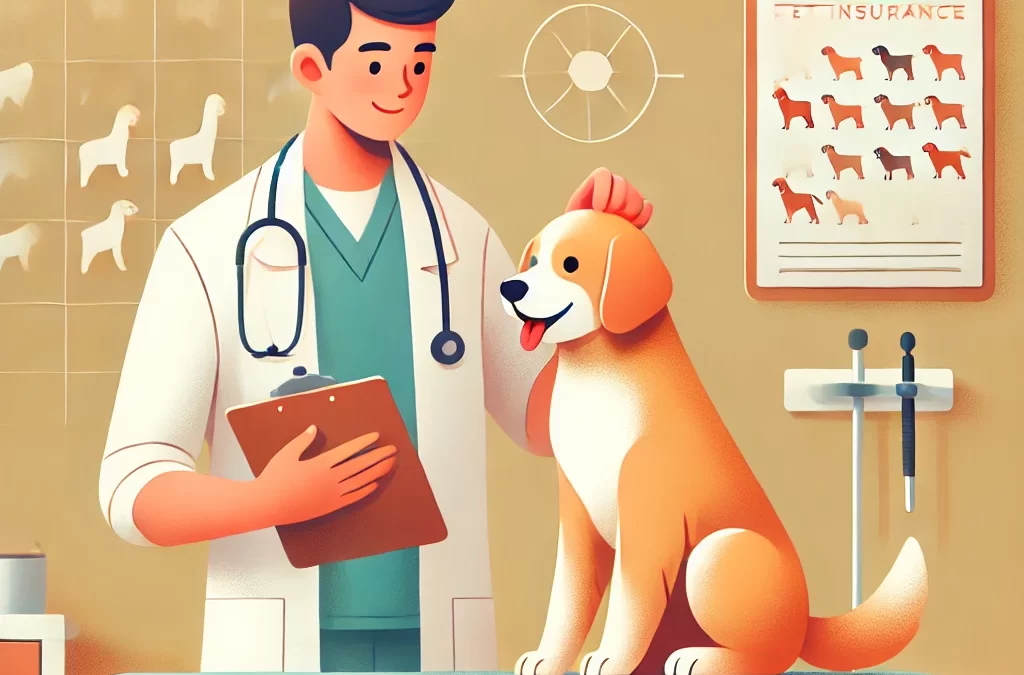
執筆者 TCMVET | 2025年1月17日 | 犬の癌と腫瘍
ペットの飼い主として、愛犬のしこりを見つけると不安になります。最初に頭に浮かぶ考えは、「がんではないか」というものです。しかし、しこりや腫れ物はすべて腫瘍というわけではありませんし、たとえ腫瘍だとしても、すべてが悪性というわけではありません。腫瘍の種類、その考えられる原因、最善の対処法を理解することで、愛犬の健康について十分な情報に基づいた判断を下すことができます。
犬のしこりの一般的な原因
犬のしこりは、良性の脂肪沈着からより深刻な癌性腫瘍まで、さまざまな理由で発生する可能性があります。最も一般的な原因は次のとおりです。
1. 脂肪腫(脂肪性腫瘍)
脂肪腫は、犬に最もよく見られる腫瘍の 1 つで、特に高齢犬や太りすぎの犬に多く見られます。脂肪腫は、皮膚の下にできる柔らかくて動きやすい、通常は無害な脂肪沈着物です。通常は治療の必要はありませんが、大きくなりすぎたり動きを妨げたりする場合は、獣医師が除去を勧めることがあります。
2. Sebaceous Cysts
皮脂嚢胞は、毛包または皮脂腺が詰まって皮脂(脂っぽい物質)が詰まった塊が形成されることで発生します。これらの嚢胞は破裂して、白っぽいまたは黄色っぽい分泌物を滲出させる場合があります。ほとんどは良性ですが、感染した場合は排液または除去が必要になる場合があります。
3. 膿瘍
膿瘍は、感染、虫刺され、または傷などによって生じることが多い、腫れて膿がたまった部分です。これらのしこりは、熱を帯び、赤くなり、触ると痛みを感じることがあります。膿瘍は自然に破裂することもあります。しかし、通常は排膿や抗生物質などの獣医による治療が必要です。
4. いぼ(乳頭腫)
犬のイボはパピローマウイルスによって引き起こされ、通常は若い犬や免疫力が弱っている犬に現れます。これらの小さなカリフラワーのような腫瘍は通常自然に治りますが、食事や運動の妨げになる場合は除去が必要になる場合があります。
5. 組織球腫
組織球腫は、若い犬によく見られる良性腫瘍です。小さな赤いドーム状のしこりとして現れ、脚、顔、耳などによく見られます。多くの組織球腫は数か月以内に自然に治りますが、持続する場合は切除が必要になることもあります。
6. 肥満細胞腫(MCT)
肥満細胞腫は、犬に最も多く見られる皮膚がんの 1 つです。外観はさまざまで、無害なしこりのように見えるものもあれば、潰瘍や炎症を起こしているものもあります。MCT は悪性度が高い場合があるため、疑わしいしこりがあればすぐに獣医に診てもらう必要があります。
7. 軟部肉腫
これらの悪性腫瘍は結合組織で発生し、ゆっくりと成長したり、攻撃的になったりすることがあります。腫瘍は硬く感じられ、皮下では簡単に動かないこともあります。早期発見と除去は、より良い予後を得るために非常に重要です。
しこりが心配かどうかを見分ける方法
しこりの中には無害なものもあれば、すぐに獣医の診察が必要なものもあります。次の特徴を考慮してください。
- 規模と成長率: しこりが急速に大きくなる場合、悪性腫瘍の可能性があります。
- 質感と可動性: 柔らかくて動くしこりは良性であることが多いですが、硬くて付着しているしこりはより心配な場合があります。
- 色と外観: 潰瘍、炎症、または出血のあるしこりは、直ちに検査を受ける必要があります。
- 痛みと不快感: 犬が触られることに反応しない場合は、感染症または悪性腫瘍の兆候がある可能性があります。
愛犬にしこりを見つけたらどうするか
1. しこりを監視する
しこりが小さく、柔らかく、不快感がない場合は、数週間観察することができます。大きさ、形、色の変化に注意してください。
2. 獣医に相談する
しこりが急速に大きくなったり、硬くなったり、痛みがあったり、異常な質感があったりする場合は、獣医の診察を受けてください。獣医は、 穿刺吸引細胞診(FNA) または 生検 しこりが良性か悪性かを判断するためです。
3. 必要に応じて削除を検討する
良性の腫瘍でも、大きくなったり、成長したり、動きを妨げたりする場合は、外科的に切除する必要があるかもしれません。癌性腫瘍の場合は、手術、放射線治療、化学療法が必要になることがよくあります。
4. 健康的なライフスタイルを維持する
バランスの取れた食事、定期的な運動、定期的な獣医の診察は、犬の免疫システムと全体的な健康をサポートし、腫瘍の発症リスクを軽減するのに役立ちます。
最終的な考え
犬のしこりのすべてがパニックの原因になるわけではありませんが、常に警戒を怠らないことが最善です。早期発見と獣医による適切な評価は、犬の健康と幸福を確保する上で大きな違いを生みます。新しいしこりや変化したしこりに気づいたら、ためらわずに獣医に相談してください。あなたの愛犬の健康は特別な注意を払う価値があります。
特定のしこりの種類や治療オプションに関する追加情報をご希望ですか?

執筆者 TCMVET | 2025年1月16日 | 犬の癌と腫瘍
愛犬に腫瘍があると診断されたら、飼い主にとって悲痛な経験となるでしょう。従来の医療では、手術、化学療法、放射線療法などの効果的な治療法が提供されますが、自然療法は犬の全体的な健康をサポートする補完的な利点を提供します。この 2 つのアプローチを組み合わせることで、犬の腫瘍を管理するためのバランスのとれた革新的な方法が生まれます。この記事では、最適な結果を得るために自然療法と西洋医学を統合した包括的な計画を設計する方法を説明します。
それぞれのアプローチの長所を理解する
従来の医学は、手術、化学療法、放射線療法、高度な診断法を通じて腫瘍に直接対処することに優れています。これらの方法は腫瘍自体の治療に重点を置いていますが、免疫力の低下、無気力、胃腸障害などの副作用を引き起こす可能性があります。
自然療法は、身体が本来持っている治癒力と治療への対処力を高めることを目的としています。選択肢には、漢方薬、食事の調整、サプリメント、鍼治療、マッサージなどがあります。これらの療法は犬の全体的な健康に焦点を当てており、従来の治療法の副作用を軽減しながら回復を促進します。
包括的な治療計画の構築
獣医師と協力して、腫瘍の種類と進行度、利用可能な治療オプション、従来の治療を犠牲にすることなく自然療法を統合する方法について話し合ってください。犬によって反応は異なるため、年齢、全体的な健康状態、ライフスタイルなど、個々のニーズを優先してください。
犬に負担をかけないように、自然療法は徐々に導入しましょう。まずは食事の調整から始め、ほうれん草、ニンジン、魚油など、がん予防に効果がある食品を加えましょう。CBD オイルや薬用キノコなどのサプリメントも徐々に取り入れましょう。回復期には、鍼治療やマッサージなど、ストレス解消法を取り入れましょう。
自然なアプローチと従来のアプローチを統合する利点
ウコンや薬用キノコなどの自然療法を使用して治療効果を高めると、免疫力が高まり、炎症が軽減されます。鍼治療と CBD オイルによる痛みの緩和と不安の軽減により、生活の質が向上します。天然の抗酸化物質は、放射線や化学療法によって引き起こされる酸化ストレスを軽減し、感情的、身体的、栄養的な健康に取り組むことで全体的な治癒をサポートします。
計画の監視と調整
獣医による定期的な診察、腫瘍の進行の頻繁な監視、犬の行動の観察は非常に重要です。食事の変更、サプリメント、代替療法を追跡する日記をつけて、犬にとって最も効果的なものを特定してください。
自然療法と従来の治療法を組み合わせることに関する誤解
自然療法が従来の医療に干渉するというのは誤解です。ほとんどの療法は、獣医師の指導のもとで従来の治療法を補完するものです。自然療法は、科学的根拠に基づいた治療法に代わるものではなく、補完的な方法として最も効果的です。徐々に統合することで、組み合わせが犬にとって負担にならないようにします。
最終的な考え
自然療法と従来の医学を組み合わせることで、犬の腫瘍を治療する有望な方法が生まれます。腫瘍に直接対処しながら犬の全体的な健康と生活の質をサポートすることで、このアプローチは包括的なケア プランを保証します。獣医師との協力、思慮深い計画、綿密な観察により、あなたの愛犬は腫瘍と闘い、最高の生活を送ることができます。
犬の健康に関しては、統合的な戦略が双方の長所を生かし、飼い主に安心感を与え、ペットにふさわしいケアを提供します。

執筆者 TCMVET | 2025年1月16日 | 犬の癌と腫瘍
獣医学の進歩に伴い、腫瘍治療などの複雑な治療費を管理するために、ペットの飼い主が保険オプションを検討するケースが増えています。腫瘍と診断された犬の場合、ペット保険は経済的負担を大幅に軽減できます。ただし、腫瘍治療が保険でカバーされるかどうか、最適な保険を選択する方法を理解するのは難しい場合があります。このガイドでは、ペットの飼い主がオプションを選択できるように、明確な概要を提供します。
腫瘍治療に対するペット保険の補償内容を理解する
ほとんどのペット保険は次の 2 つのカテゴリに分類されます。
- 事故のみの保険: これらは事故による傷害をカバーしますが、腫瘍などの病気は通常は除外されます。
- 包括的なポリシー: これらのプランでは、がん治療、手術、投薬など、事故と病気の両方がカバーされることが多いです。
ただし、詳細はプロバイダーによって異なります。補償範囲に影響する主な要因は次のとおりです。
- 既往症: 保険を購入する前に犬に腫瘍が診断されていた場合、保険が適用される可能性は低くなります。
- Type of Tumor: 一部の保険では、補償範囲に関して良性腫瘍と悪性腫瘍を区別する場合があります。
- 治療の選択肢: 補償範囲には、診断(生検、画像診断など)、手術、化学療法、放射線治療、さらには緩和ケアも含まれる場合があります。
ペット保険を選ぶ際に考慮すべき要素
ペット保険を評価するときは、腫瘍関連の費用が確実にカバーされるように、次の点に注目してください。
補償範囲
- 年間または生涯の上限: 一部の保険では、年間またはペットの生涯にわたって支払う金額に制限を設けています。
- 条件ごとの制限: 保険では、がんなどの特定の病状に対して支払額の上限を定める場合があります。
払い戻し率と控除額
- 償還率: 通常、獣医の請求額は 70% から 90% の範囲です。保険料と自己負担額のバランスが取れる料金を選択してください。
- 控除額: 免責額を高くすると保険料は下がりますが、補償が適用されるまでに前払い金が多く必要になります。
待機期間
ほとんどの保険には待機期間があり、病気の場合は通常 14 ~ 30 日間です。この期間中に診断された腫瘍の治療は補償されません。
高度な治療の導入
次のような高度な治療を明示的にカバーするポリシーを探してください。
- 化学療法と放射線療法
- 免疫療法
- 実験的または代替療法
除外事項
除外事項を理解するために細則をお読みください。一部のプランでは、ホリスティック治療や手術後に必要な長期投薬がカバーされない場合があります。
人気のペット保険会社の比較
大手ペット保険会社が一般的に提供している機能の簡単な比較を以下に示します。
| プロバイダー | 腫瘍治療の補償 | 年間限度額 | 待機期間 | 注目すべき機能 |
|---|
| トルパニオン | はい、包括的です | 無制限 | 5日間 | 支払い上限なし |
| 健康な足 | はい、がんも含みます | 無制限 | 15日間 | 代替医療をカバー |
| ASPCA ペットヘルス | はい、アドオン付き | $5k–無制限 | 14日間 | 柔軟な補償範囲 |
| 抱きしめる | はい | $15k | 14日間 | ウェルネスアドオンを提供 |
適切なプランを選択するためのヒント
- 犬のリスク要因を評価する: 高齢の犬や腫瘍になりやすい犬種は、広範囲にわたるがん補償を備えた保険の恩恵を受ける可能性があります。
- 予算を確認する: 保険料、免責額、および潜在的な自己負担費用を考慮に入れます。
- 直接支払いオプションについて問い合わせる: 一部の保険会社は獣医師に直接支払いを行い、飼い主の初期費用を削減しています。
- 追加のライダーを検討してください: 慢性疾患や健康管理のための特約は、基本保険を補完することができます。
ペット保険の代替
ペット保険が適切ではないと思われる場合は、次の代替案を検討してください。
- ペット健康貯蓄口座: 緊急時に備えて資金を確保しておいてください。
- ケアクレジット: 高額な治療費を負担する獣医の資金調達オプション。
- がんに特化した基金: 癌に罹患したペットに経済的援助を提供する団体もあります。
結論
ペット保険は、犬の腫瘍治療の際に貴重なリソースとなりますが、慎重に選択することが重要です。保険の補償範囲、除外事項、費用を理解することで、ペットのニーズに合わせたプランを確実に選択できます。早めに始め、既往症による除外事項を避け、愛犬に可能な限り最高のケアを提供してください。
保険オプションの比較についてサポートが必要な場合や、ペットの健康について質問がある場合は、獣医師またはペット保険の専門家に相談して、個別のアドバイスを受けてください。

執筆者 TCMVET | 2025年1月13日 | 犬の癌と腫瘍
猫を愛する飼い主にとって、猫の健康と幸福を確保することは最優先事項です。猫は不快感を隠すのが得意ですが、腫瘍の初期兆候はすぐに治療が必要であることを示している場合があります。早期発見と自然療法を組み合わせることで、猫の治療と全体的な生活の質をサポートする総合的なアプローチが実現する可能性があります。
猫の腫瘍の初期症状を認識する
腫瘍の微妙な兆候を理解することは、早期介入に役立ちます。一般的な症状には次のようなものがあります。
- しこりや腫れ皮膚の下または腹部に生じる原因不明の腫瘍。
- 減量食生活を変えずに急激または徐々に体重が減少すること。
- Changes in Appetite: 食習慣の増加または減少。
- 無気力: 持続的な疲労感またはプレーへの消極的態度。
- 行動の変化: 隠れたり、攻撃的になったり、発声したりする行動が増える。
- 嘔吐または下痢: 明らかな原因のない消化障害。
これらの症状に気付いた場合は、すぐに獣医師に相談して診断を受けてください。早期発見が病気を効果的に管理する鍵となります。
治療をサポートする自然療法の役割
自然療法は獣医による治療を補完し、猫の快適さの向上、副作用の軽減、全体的な健康の向上に重点を置いています。以下に、有望な自然療法をいくつか紹介します。
- 栄養サポート
猫の状態に合わせた栄養豊富な食事が重要です。主な食事成分は次のとおりです。
- オメガ3脂肪酸: 魚油に含まれるこれらは炎症を軽減し、免疫機能をサポートします。
- 抗酸化物質ビタミンA、C、Eは酸化ストレスと戦い、腫瘍の進行を遅らせる可能性があります。
- タンパク質が豊富な食品筋肉量を維持するために、鶏肉や七面鳥などの高品質なタンパク質源を摂取します。
- ハーブ療法
特定のハーブは抗炎症作用と免疫力を高める作用があることで知られています。
- ターメリック(クルクミン): 抗がん作用があることで知られており、腫瘍の成長を抑える効果があると考えられます。
- エシアックティー: がんを患うペットのサポートによく使用されるハーブのブレンド。
- ミルクシスル: 特に投薬中や化学療法中の肝機能をサポートします。
- TCMVET 白頭霄: 腫瘍の成長を抑え、抑制するように設計された天然サプリメントで、腫瘍のある猫をサポートします。
- CBDオイル
フルスペクトラム CBD オイルは、がんを患う猫の痛み、炎症、不安を軽減する可能性があることから人気が高まっています。必ずペット用に特別に配合された製品を使用し、CBD を与える前に獣医に相談してください。
- 鍼治療
鍼治療は、がん治療を受けている猫の痛みを管理し、エネルギーレベルを改善し、食欲を刺激するのに役立つ、安全で非侵襲的な方法です。
自然療法の利点
- 副作用の軽減化学療法などの従来の治療の影響を軽減します。
- 快適性の向上痛みやストレスを管理することで生活の質を向上させます。
- ホリスティックヒーリング: 身体的および感情的な健康を自然にサポートします。
早期発見と TCMVET Baituxiao などの適切な自然療法を組み合わせることで、猫の経過に大きな違いをもたらすことができます。常に獣医師に相談して、愛するペットに最適なケア プランを確保してください。

執筆者 TCMVET | 2025年1月12日 | 犬の癌と腫瘍
ペットの癌は、飼い主なら誰も直面したくない悲痛な現実です。治療は命を救うことが多いものの、ペットの生活の質に重大な影響を与える無数の副作用を伴います。癌に苦しむペットを支援するより良い方法の模索が続く中、自然療法が希望の光として浮上しています。これらの療法は、従来の治療の副作用を軽減するだけでなく、愛するペットの全体的な健康状態を改善することを目指しています。
がん治療における副作用の課題
化学療法、放射線療法、手術などの従来の癌治療は、腫瘍を標的とするのに効果的ですが、多くの副作用を伴うことがよくあります。一般的な問題は次のとおりです。
- 吐き気と嘔吐
- 疲労と無気力
- 食欲減少
- 痛みと炎症
- 免疫システムの抑制
多くのペットの飼い主にとって、これらの副作用を管理するのは困難な戦いのように感じられるかもしれません。自然療法は、ペットの快適さと全体的な健康に焦点を当てながら、これらの課題に対処する代替または補完的な方法を提供します。
副作用を軽減する主な自然療法
- 吐き気と消化を助ける生姜
ショウガは長年にわたり、吐き気の治療法として効果を実証されています。抗炎症化合物が豊富に含まれており、ペットが化学療法による吐き気や嘔吐に対処するのに役立ちます。ショウガ茶やサプリメントは、適切な量を摂取すると、胃の調子を整え、食欲を増進します。
- 炎症と疲労に効くオメガ3脂肪酸
魚油に含まれるオメガ 3 脂肪酸には、痛みを軽減し、エネルギー レベルを高める抗炎症作用があります。また、これらの脂肪酸は免疫システムをサポートし、治療中に健康な毛皮と皮膚を維持するのに役立ちます。
- 腸の健康のためのプロバイオティクス
がん治療は腸内細菌叢を乱し、下痢や免疫力の低下を引き起こす可能性があります。ペット向けに調整されたプロバイオティクス サプリメントは、健康な腸内細菌叢を回復させ、消化と全体的な健康を改善します。
- 痛みの緩和と抗炎症のためのウコン
ウコンには、強力な抗炎症作用と抗酸化作用を持つ天然化合物であるクルクミンが含まれています。がん治療中の痛みの抑制、炎症の軽減、免疫システムのサポートに役立ちます。
- 痛みと不安を和らげるCBDオイル
CBD オイルは、ペットの慢性的な痛みを管理し、不安を軽減する効果があることから人気を集めています。がん治療による不快感を和らげ、ペットの気分を改善し、睡眠とリラクゼーションを促進します。
- 免疫力をサポートする霊芝
霊芝は、免疫力を高め、ストレスを軽減する能力があることで知られるアダプトゲンです。免疫抑制治療中にペットを感染から守り、ペットの全体的な回復力を向上させるのに役立ちます。
- 痛みの管理のための鍼治療
鍼治療は、がん治療を受けているペットの痛みを和らげ、エネルギーレベルを高め、食欲を刺激する効果があることが証明されている総合的な治療法です。これは非侵襲的な治療法であり、多くのペットが耐えることができます。
- ストレス軽減のためのアロマセラピー
ラベンダーやカモミールのような優しい香りは、ペットのストレスや不安を軽減するのに役立ちます。エッセンシャルオイルは、正しく使用すれば、癌治療の厳しさに耐えているペットに落ち着いた環境を作り出すことができます。
自然療法が生活の質を向上させる方法
自然療法の究極の目標は、副作用を軽減するだけでなく、ペットの生活の質を高めることです。特定の症状をターゲットにし、全体的な健康状態を向上させることで、これらの療法はペットに次のような効果をもたらします。
- エネルギーと活力の増加
- 食欲と消化の改善
- 痛みや不快感の軽減
- 二次感染と戦うためのより強い免疫システム
がん治療への総合的アプローチ
自然療法は、従来の治療法とサポートケアプランと組み合わせると最も効果的です。この総合的なアプローチにより、ペットの体と心の両方が養われます。統合医療の経験がある獣医師による定期的な診察は、各ペットに最適な治療プランをカスタマイズするのに役立ちます。
実際の成功事例
感動的な話の 1 つは、リンパ腫と診断された老犬のラブラドール レトリバー、ベラに関するものです。化学療法を開始した後、ベラのエネルギー レベルは急激に低下し、ひどい吐き気に悩まされました。飼い主は、鍼治療に加えて、ショウガと CBD オイルをベラのケア プランに取り入れました。数週間のうちに、ベラの食欲は改善し、遊び心のある態度を取り戻しました。これは、従来の治療法と自然療法を組み合わせることで大きな違いが生まれることを証明しています。
希望と癒しの未来
自然療法に対する理解が深まるにつれ、ペットの癌治療を改善する可能性も高まります。これらの療法は、副作用の負担を軽減し、治療期間中にペットがより快適で充実した生活を送れるようにする希望を与えてくれます。
ペットが癌にかかっている場合は、総合的な治療計画の一環として自然療法を検討してください。選択した治療法の安全性と有効性を確認するために、必ず獣医師に相談してください。一緒にペットに健康と幸福をもたらす最高のチャンスを与えましょう。

執筆者 TCMVET | 2025年1月12日 | 犬の癌と腫瘍
がんは、ペットの飼い主にとって、気が遠くなるような診断です。愛する毛むくじゃらの仲間がそのような闘いに耐えていると思うと、気が遠くなるような思いがします。化学療法や手術などの従来の治療法が第一の防御策となることが多いですが、多くのペットの飼い主は、成長を続ける自然療法の世界を模索しています。その中でも、ハーブ療法は、猫や犬のがんを管理する有望な選択肢として際立っています。この記事では、ハーブ療法が従来の治療法を補完し、生活の質を向上させ、ペットのがんの進行を遅らせるのに役立つ可能性について詳しく説明します。
ペットの癌治療におけるハーブ療法の力
ハーブは、中国伝統医学 (TCM) やアーユルヴェーダなどの伝統的な医療システムで何世紀にもわたり使用されてきました。現在、獣医腫瘍学におけるハーブの潜在力が認められつつあります。特定のハーブには、抗炎症作用、免疫増強作用、さらには抗がん作用があると考えられており、がんを患うペットをサポートする貴重な味方となっています。
ペットの癌治療に重要なハーブ
- ウコン
ウコンは、強力な抗炎症作用と抗酸化作用を持つ活性化合物クルクミンで有名です。研究によると、クルクミンは腫瘍の成長を遅らせ、がんに伴う炎症を軽減する効果があるようです。
- ミルクシスル (Silybum marianum)
肝臓を保護する効果があることで知られるミルクシスルは、特に化学療法を受けているペットの体内の解毒によく使用されます。肝臓を毒素による損傷から守るのに役立ちます。
- アシュワガンダ(ウィタニア・ソムニフェラ)
アシュワガンダはアダプトゲンハーブで、ペットのストレス管理を助け、免疫システムをサポートします。また、がん細胞にアポトーシス(プログラム細胞死)を誘導することで抗がん作用も発揮します。
- 霊芝
霊芝は厳密にはキノコですが、その薬効のためハーブに分類されることが多いです。免疫機能を高め、炎症を軽減し、腫瘍の成長を抑制する化合物を含んでいます。
- 川雄(四川ラビッジの根)
中医学の定番である川芎は、血液循環を改善し、痛みを軽減するために使用されます。川芎の抗炎症作用は、がんを患っているペットの気分を良くするのに役立つ可能性があります。
- 緑茶
緑茶に含まれるポリフェノール、特にエピガロカテキンガレート(EGCG)は、がん細胞の増殖を抑制し、健康な細胞を酸化ダメージから守る効果があることが示されています。
がん治療におけるハーブサポートの利点
ハーブは、がんと闘うペットに幅広いメリットをもたらします。
- 免疫反応の強化。多くのハーブは免疫システムを強化し、ペットががん細胞とより効果的に戦えるようにします。
- 副作用の軽減。ハーブ療法は、吐き気、疲労、食欲不振など、従来の治療法の副作用を軽減することができます。
- 抗がん作用。特定のハーブには、がん細胞を直接標的とし、その成長を遅らせたり、細胞死を誘発したりする化合物が含まれています。
- 生活の質の向上。炎症を軽減し、痛みを管理することで、ハーブはペットの全体的な健康を大幅に改善することができます。
ハーブ療法を安全に使用する方法
ハーブ療法には素晴らしい可能性がありますが、責任を持って使用することが重要です。
- 獣医に相談してください。ハーブ療法については必ず獣医に相談してください。できれば統合医療の経験がある獣医に相談してください。
- 品質は重要です。評判の良いブランドの高品質でペットに安全なハーブサプリメントをお選びください。
- 進行状況を監視します。ペットの状態の変化を記録し、獣医に報告します。
- 薬の重複服用は避けてください。一部のハーブは従来の治療法と相互作用する可能性があるため、互換性を確認することが重要です。
がん治療への総合的アプローチ
ハーブは従来の治療法に代わるものではなく、総合的なアプローチの一環として従来の治療法を補完するものです。ハーブを適切な栄養、適度な運動、精神的サポートと組み合わせることで、ペットの健康を改善するための強力な枠組みを作ることができます。
成功事例: 実際のアプリケーション
多くのペットの飼い主が、ガン治療中にハーブのサポートがペットの生活をどのように変えたかについての体験談をシェアしています。腫瘍サイズの縮小からエネルギー レベルの回復まで、これらの体験談は自然療法の可能性を強調しています。
例えば、リンパ腫と闘っていたある犬は、従来の化学療法と並行してウコンと霊芝のサプリメントの摂取を開始した後、食欲と運動能力が大幅に改善しました。
結論
ハーブによるサポートは、がんと診断されたペットに希望と癒しをもたらします。自然の力を活用することで、ペットの生活の質を高め、回復のためのサポート環境を提供することができます。ペットががんと闘っている場合は、信頼できる獣医師の指導のもと、総合的なケア計画の一環としてハーブ療法を検討してください。






